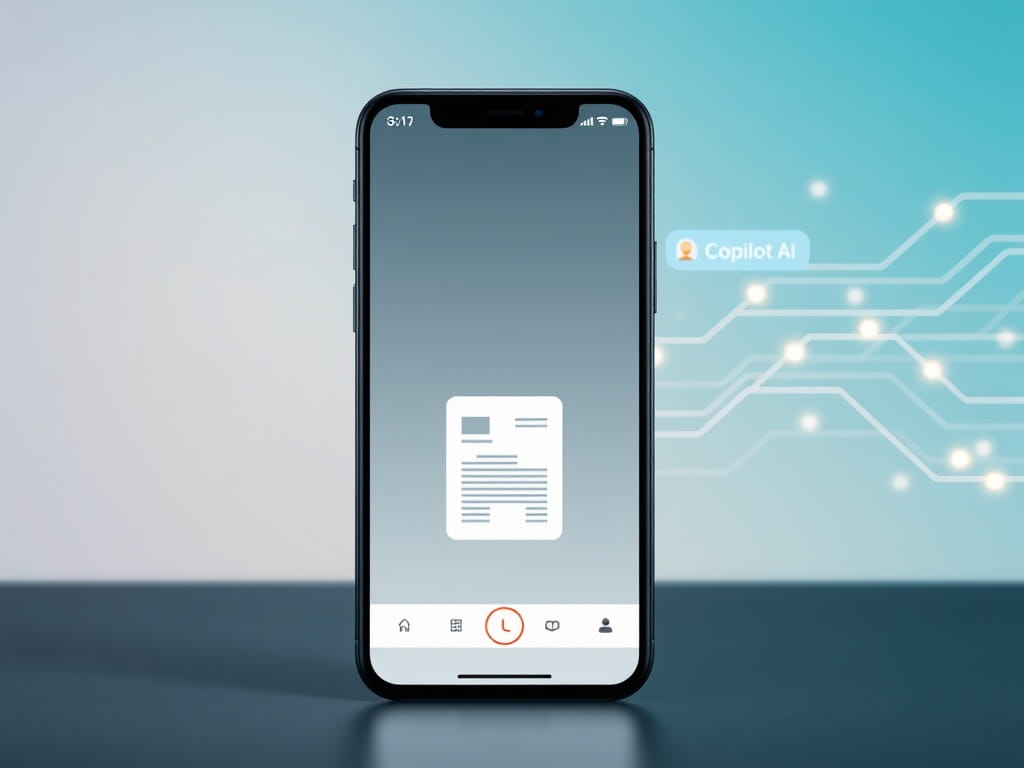BitcoinWorld  Microsoft Lens’s Shocking End: How Copilot AI Reshapes Mobile Scanning
Microsoft Lens’s Shocking End: How Copilot AI Reshapes Mobile Scanning
The world of technology is constantly evolving, and for those deeply invested in the fast-paced shifts of the digital landscape, especially in areas like cryptocurrencies and decentralized finance, understanding these transitions is key. We often see how new innovations like AI promise revolutionary changes, sometimes at the cost of beloved, simpler tools. This very trend is now playing out with the unexpected retirement of Microsoft Lens, a straightforward yet incredibly effective mobile scanning app that many users relied upon for quick, fuss-free digitization.
The End of an Era: Farewell, Microsoft Lens
For years, Microsoft Lens stood out as a beacon of simplicity in a crowded app marketplace. Launched in 2015, originally as Office Lens, it offered a clean, intuitive way to transform physical documents, whiteboards, business cards, and even handwritten notes into digital files. What made it particularly appealing was its commitment to core functionality without the common pitfalls of modern apps—no hidden fees, no aggressive subscription pushes, just pure utility. It expertly converted scans into various formats like PDF, Word, PowerPoint, and Excel, complete with useful filters for enhancement.
However, the winds of change are blowing, and Microsoft has officially announced the discontinuation of this popular mobile scanner app. The timeline for its retirement is clear:
September 15, 2025: Lens will be retired from iOS and Android devices.
November 15, 2025: The app will be removed from the Apple App Store and Google Play.
December 15, 2025: New scans will no longer be possible. Existing scans will remain accessible on the user’s device.
This decision, first highlighted by BleepingComputer, marks a significant shift, as Microsoft directs users towards its more expansive, AI-centric offering: Copilot AI.
Is Copilot AI a True Replacement for AI Document Scanning?
Microsoft’s strategy is clear: consolidate functionalities into its AI flagship, Copilot AI. The intent is to leverage advanced AI capabilities for a more integrated user experience. While Copilot is undeniably powerful in many respects, particularly its conversational AI and content generation, questions arise about its suitability as a direct successor for dedicated AI document scanning.
The core issue highlighted by users and tech observers is a feature parity gap. While Copilot can indeed handle some scanning tasks, it currently lacks several key functionalities that made Lens so effective and user-friendly:
Direct Integration: Lens allowed seamless saving of scans directly to OneNote, Word, or PowerPoint. Copilot does not currently offer this level of direct integration for scanned content.
Business Card Scanning: A standout feature of Lens was its ability to accurately scan business cards and save contact information to OneNote. This specific functionality is missing in Copilot.
Accessibility Features: Lens incorporated valuable accessibility tools like read-out-loud and Immersive Reader integration, crucial for many users. These features are not present in Copilot’s scanning capabilities.
This disparity suggests that while Copilot is a versatile AI assistant, it may not yet be a one-to-one replacement for the specialized, optimized experience Lens provided for document scanning. Users who valued Lens for its specific, streamlined purpose might find themselves looking for alternative solutions.
The Broader Implications of AI Integration in Apps
The discontinuation of Microsoft Lens in favor of Copilot AI is more than just an app update; it’s a microcosm of a larger trend in the tech industry: the pervasive AI integration into existing software ecosystems. Companies are increasingly embedding AI capabilities into their core products, aiming for a unified, intelligent experience. The goal is often to simplify user workflows, automate tasks, and provide predictive insights, thereby driving a new wave of digital transformation.
On one hand, this move promises innovation. AI can enhance scanning by improving OCR (Optical Character Recognition) accuracy, automating categorization, and even summarizing scanned content. For a company like Microsoft, consolidating features into Copilot could lead to a more powerful, all-encompassing productivity suite. On the other hand, it raises questions about user choice and the “bloat” factor. Will specialized, single-purpose apps like Lens be sacrificed at the altar of multi-functional AI platforms, even if the AI doesn’t perfectly replicate the specialized tool’s utility?
The popularity of Lens, evidenced by its 92.3 million downloads since 2017 and over 322,000 downloads in the last 30 days alone (according to Appfigures), underscores that there is a significant user base that valued its simplicity and dedicated functionality. This user base might now face a dilemma: adapt to Copilot’s different workflow, or seek out third-party alternatives that still offer the focused scanning experience they prefer.
Navigating the Future of Digital Transformation
As we navigate this period of rapid digital transformation, the case of Microsoft Lens serves as a poignant reminder that while AI promises immense potential, the transition isn’t always seamless for the end-user. The convenience of a dedicated, no-frills tool is often underestimated until it’s gone. For businesses and individuals who rely heavily on efficient document digitization, this shift necessitates evaluating new workflows and exploring the evolving landscape of AI document scanning solutions.
The move by Microsoft signals a future where AI isn’t just an add-on but the central nervous system of our digital tools. While this promises exciting advancements, it also challenges developers to ensure that the integration of AI truly enhances, rather than diminishes, the user experience for specific tasks. The coming months will reveal how users adapt to Copilot’s capabilities and whether Microsoft will further refine its AI offerings to fully compensate for the loss of a simple, effective tool like Lens.
To learn more about the latest AI integration trends, explore our article on key developments shaping AI models and features.
This post Microsoft Lens’s Shocking End: How Copilot AI Reshapes Mobile Scanning first appeared on BitcoinWorld and is written by Editorial Team

